The AirPods aren't a must-buy (yet)
Apple's first wireless earbuds aren't perfect, but they have potential.
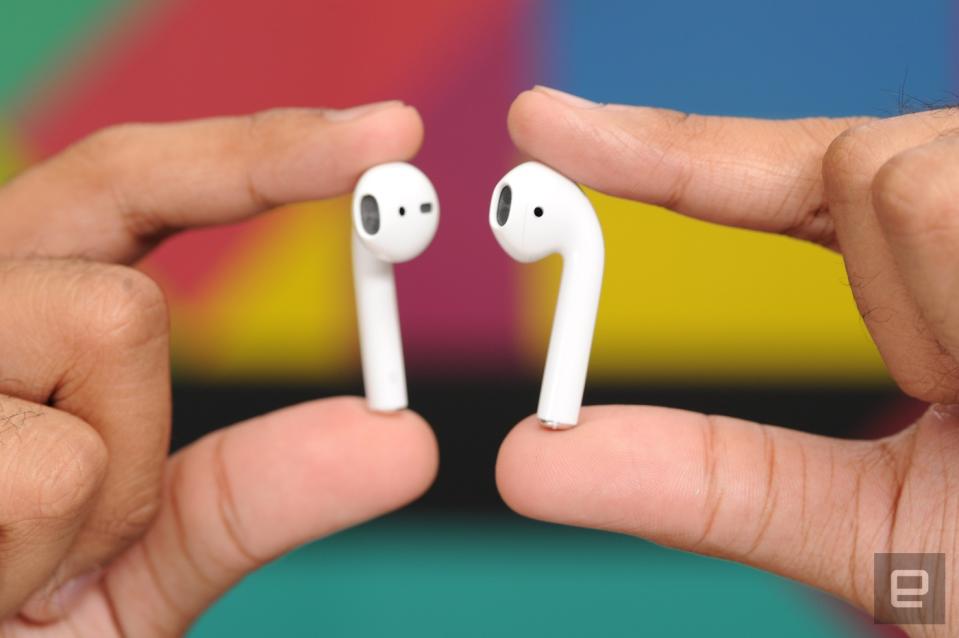
The iPhone 7 goes on sale in a few days, and with it comes another nail in the headphone jack's proverbial coffin. Included in the box you'll find a pair of Lightning-tipped EarPods and a Lightning-to-3.5mm adapter for your analog headphones, but to hear Apple tell it, the future of music is wireless. That's where the $159 AirPods come in: the company's totally cordless earbuds are slated for an October launch, and they promise elegance, ease of use and great sound. They deliver ... some of that, but after about a week of testing, they often felt as confusing as they did cool.
Note: Our original review was conducted with AirPods that we understood to be consumer ready, but in hindsight that obviously wasn't the case. After using the originals for about three months with no issue, I received a final-production set, and was able to compare the two. We have since updated this review with further impressions. Long story short: We are bumping the score from 79 to 80, but generally speaking all of our earlier praise and criticism still applies.
Getting started
When you open the packaging for the first time, you're met with a rounded white mass that looks similar to a container of dental floss. That's the charging case, and it's where the AirPods are going to spend most of their time. It's almost completely nondescript, save for a chrome-accented hinge, a Lightning port on the bottom and a small button on the back -- you'll need that to pair the AirPods for the first time. Side note: You don't need to be an iOS devotee to use these things. They paired just fine with a Galaxy S7 Edge, but all of the fun stuff basically evaporated; all you can do is listen to music and take calls.
Speaking of pairing, it's a cinch if you're using the AirPods with iPhones running iOS 10. You'll get an error if you try connecting them to a phone still on iOS 9, but they still ultimately work. (The AirPods are also compatible with Apple Watches running watchOS 3 and Macs on macOS Sierra, but I didn't have anything like that lying around.) Just open the charging case near the phone, et voilà: A window will pop up on the screen prompting you to connect the AirPods. Hold down the button and that's it -- you're ready to let the tunes flow. Granted, it was never all that hard to get things connected via Bluetooth, but this simplicity is one of the best parts of using AirPods. They just work.
Design
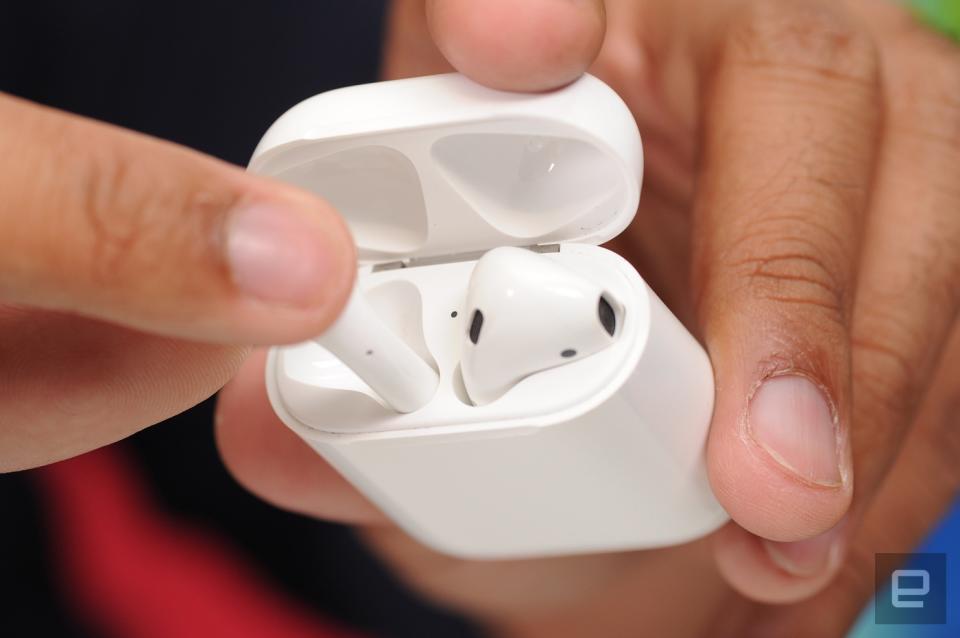
Naturally, ease of use doesn't mean a thing if you're not comfortable having these in your ears. In brief, if you hated the way Apple's wired EarPods looked or felt in your ears, these aren't going to do anything for you. I never minded them myself -- they were fine for when I went on runs, and I never had problems with them falling out of my ears. That streak continued nicely with the AirPods, but I know a ton of people for whom EarPods just never fit. Still others could get EarPods in their ears but couldn't use them for long because they'd just fall out. Sound familiar? You probably shouldn't take a chance on these.
They also just look sort of awkward, as though you popped in some EarPods and immediately snipped the cords off. My colleague Andy might have said it best: When I strolled into our San Francisco office wearing them, he said I looked like I had broken Q-Tips off in my ears. He had a point. In fairness, I'm stunned Apple squeezed as much tech into the AirPods as they did; there's a pair of batteries to keep everything working, plus accelerometers and an optical sensor to determine whether the AirPods are in your ears.
Powering all that is a tiny chip called the W1 that manages the connection between the AirPods and the device they're connected to. Apple has said this silicon will wind up in Beats wireless headphones soon too, though I'll bite my tongue and not make jokes about Beats' audio quality until I actually get a chance to try them. Oh, here's a quick (and probably obvious) pro tip. The AirPods are prone to the same absentminded goofs that could spell doom for other completely wireless earbuds. In fact, just before I sat down to write this sentence, I rushed to my laundry room to fish the AirPods out of a pair of jeans I had just thrown in the hamper. Don't be like me, people. Always put them back in the case.
In use
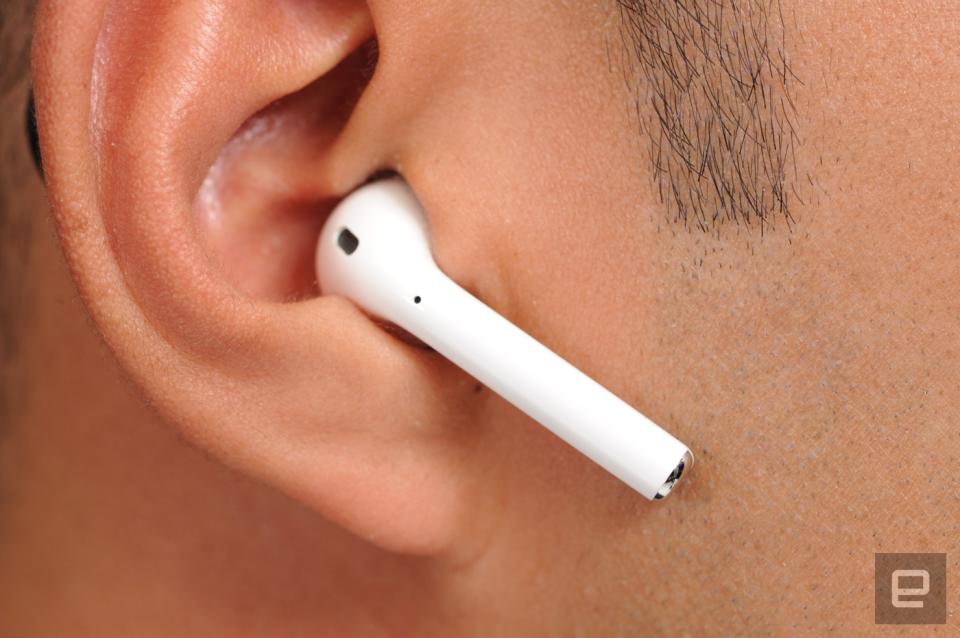
After popping in the 'Pods and hearing the instrumental confirmation sound, things are ready to happen. Now we're getting to the meaty part: How do these things actually sound? Not bad, but ultimately not much better than the EarPods we know and love. That's not to say there aren't any improvements. In general, the AirPods gave mids a little more meat than EarPods did, and drum fills felt crisper and more precise. My test tracks -- which these days include a lot of jazz and EDM -- came across warmer than I would have expected, which was a pleasant surprise.
That said, the all-too-familiar design means the AirPods inherit my biggest pet peeve with the EarPods -- how airy they make my music sound. Songs that go heavy on the highs and lows tend to sound a little toothless, which, again, is natural for this design. I'm just frustrated that Apple couldn't have tweaked it to achieve a little more oomph.
I also wish we had the option to customize the AirPods' controls more. By default, double-tapping one of the buds wakes Siri up, and she can do all the things you'd expect. You can change these controls so that a double tap pauses and plays the current track, but that's really about it. (You can also just remove an earbud to pause your music, which seems like the more natural way to go anyway.) The thing is, if you want to change tracks or tweak the volume, you have to either ask Siri to do it or reach for your phone. That's it. Years of using Apple's white earbuds have ingrained in me the double click to skip a song and a triple click to go back. It seems odd that there's no way to program these common controls.
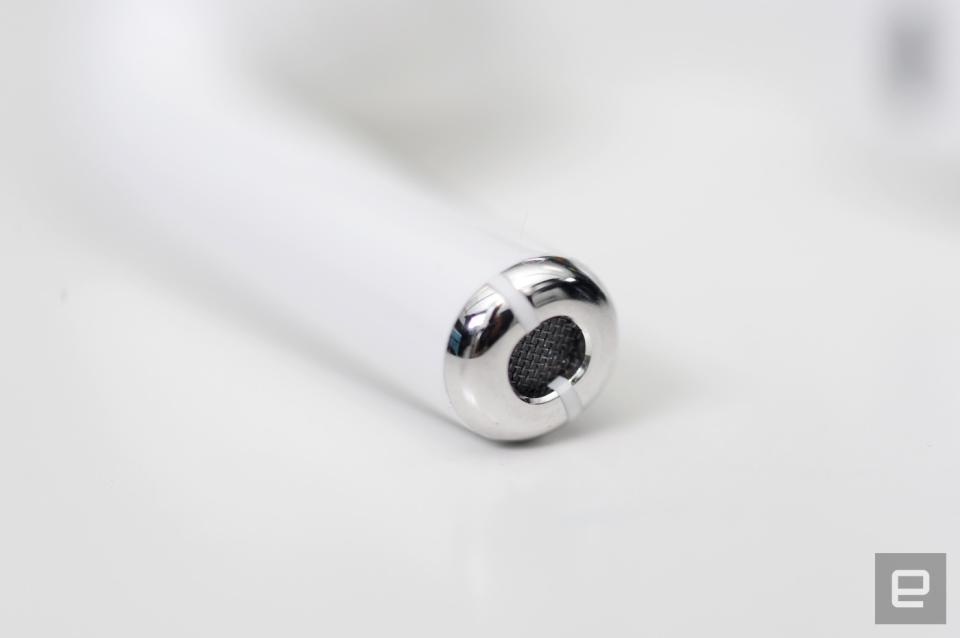
Lest you think I'm being needlessly picky, know that the AirPods actually work really well for voice calls. The stems that point down from the buds house the antenna and microphone, and no one I spoke to over the course of the week had any complaints about audio quality. The battery life has generally been impressive too, with the AirPods typically lasting a little over the five hours Apple said to expect. Frequent trips to the charging case help in a pinch too, since it can extend the Pods' runtime by up to three hours with a 15-minute charge. I've plugged in the whole pod-and-case package just once since I received these things a week ago and the case is still sitting pretty with 33 percent battery life. Not bad at all.
Three months in
Well, here we are. While Apple has scrambled to fix whatever issues its original AirPods had, I've been wearing them nearly every day for three months. While my colleagues have made fun of me just about every time they saw the AirPods in my ears, I regret nothing. Yes, there are better sounding all-wireless earbuds out there, not to mention more feature-rich ones, and to this day I still chafe at not being able to change tracks without whipping out my phone or talking to Siri.
What I didn't expect was how seamlessly the AirPods would fit into my life. My morning routine for the past three months has been as follows: drive to a train station, pop in the AirPods, listen to podcasts until I get to New York, jump on the subway and fire up an audiobook, arrive at the office, turn on another podcast, and then get to work. I thought after a while I'd feel an itch for richer audio, but that impulse never emerged; the AirPods sound good enough that I didn't spend my commute wishing for something better. Ultimately, to buy the AirPods is to choose convenience over sound quality, and for a lot of people that will be a fair trade-off.
The ease with which the AirPods can be connected to Macs also meant I could leave the earbuds in all day... or at least until the batteries ran out. Fortunately, the AirPods still charge quickly, even after three months. I typically plug them in for about a half hour, and both Pods climb back up to full power, leaving the once-dry charging case at about 60 percent full. It's worth noting that pocket schmutz is very noticeable when it winds up trapped by the case's hinge -- right now, mine has lots of black lint from my winter coat wedged in there.
Oh, and despite some of my early snark, I still haven't lost either of the buds. For a guy like me, who forgets where his phone is 40 seconds after putting it down, this is a minor miracle. I'd still love it if there were some way to ping a stray AirPod from the phone -- maybe by having it play a really obnoxious alert sound -- but Apple hasn't added any features since I tested that pre-production set back in September.
Wrap-up
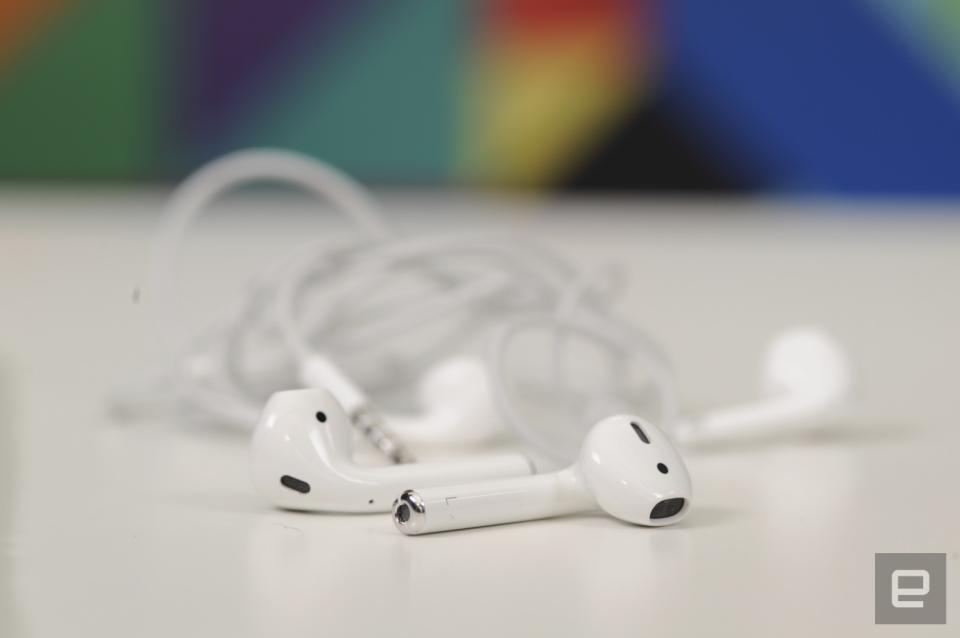
When I first encountered the AirPods, I said I didn't think they'd be a must-have. Now, months after my first go-around, that's still where I'm at. The Pods are smart, and their integration with iOS 10 is first rate, but they fall short in some important ways. The sound quality could have been better, and I wish we had more options where the controls are concerned. That said, I'm intrigued by the possibilities they present and there's no denying that they're still some of the most convenient earbuds I've ever used.
If Apple had made the software and controls a little more flexible, the AirPods might have earned a spot on our must-own list. As they stand, the AirPods are a handy accessory that work as promised, but aren't necessarily worth the asking price. After all the work it took to ship these things, I can't imagine Apple will give up on this pet project, and that's a good thing. The first-gen AirPods are perfectly fine, but smarter software could make future versions great.
All product photography by Will Lipman.

















